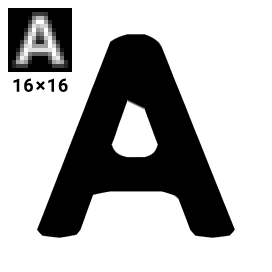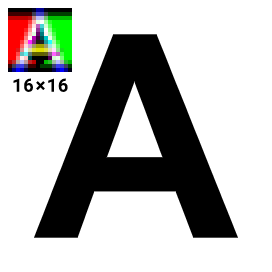For modular use, the "q5-core.js" module must be loaded first.
<script src="https://q5js.org/src/q5-core.js"></script>These modules are included in the default "q5.js" bundle:
<script src="https://q5js.org/src/q5-core.js"></script>
<script src="https://q5js.org/src/q5-canvas.js"></script>
<script src="https://q5js.org/src/q5-2d-canvas.js"></script>
<script src="https://q5js.org/src/q5-2d-drawing.js"></script>
<script src="https://q5js.org/src/q5-2d-image.js"></script>
<script src="https://q5js.org/src/q5-2d-soft-filters.js"></script>
<script src="https://q5js.org/src/q5-2d-text.js"></script>
<script src="https://q5js.org/src/q5-ai.js"></script>
<script src="https://q5js.org/src/q5-color.js"></script>
<script src="https://q5js.org/src/q5-display.js"></script>
<script src="https://q5js.org/src/q5-input.js"></script>
<script src="https://q5js.org/src/q5-math.js"></script>
<script src="https://q5js.org/src/q5-sound.js"></script>
<script src="https://q5js.org/src/q5-util.js"></script>
<script src="https://q5js.org/src/q5-vector.js"></script>
<script src="https://q5js.org/src/q5-webgpu-canvas.js"></script>
<script src="https://q5js.org/src/q5-webgpu-drawing.js"></script>
<script src="https://q5js.org/src/q5-webgpu-image.js"></script>
<script src="https://q5js.org/src/q5-webgpu-text.js"></script>Additional modules:
<script src="https://q5js.org/src/q5-dom.js"></script>
<script src="https://q5js.org/src/q5-noisier.js"></script>
<script src="https://q5js.org/src/q5-sensors.js"></script>The core module provides the absolute basic functionality necessary to run q5.
It loads other modules by passing $ (alias for this) and q (which in global mode is a proxy for this and window or global).
The canvas module provides shared functionality for all canvas renderers, such as adding the canvas to the DOM, resizing the canvas, setting pixel density.
Adds Canvas2D rendering support to q5.
All other 2D modules depend on this module.
Though loading q5-color is recommend, it's not required since fill and stroke can be set to a CSS color string.
Adds Canvas2D drawing functions to q5.
Adds Canvas2D image support to q5.
The filters in q5-image use the CanvasRenderingContext2D.filter property to apply native hardware-accelerated filters to images.
Software implementation of image filters.
This module includes additional filters not implemented in q5-image and legacy filter support for Safari which lacks ctx.filter.
These filters are slow. Real-time use of them is not recommended.
As of April 2024, Safari Technology Preview supports ctx.filter under a flag. Hopefully in the near future this module can be omitted from the default bundle.
Adds Canvas2D text rendering support to q5.
Image based features in this module require the q5-2d-image module.
⚠️ Experimental features!⚠️
WebGPU is the successor to WebGL. It's a modern graphics API that provides cross-platform, high-performance access to the GPU.
When you intend for a sketch to use WebGPU, but WebGPU is not supported on a viewer's browser, q5 will put a warning in the console, apply a compatibility layer, and display the sketch with the fallback q2d renderer. As of November 2024, WebGPU is only supported in Google Chrome and Edge.
To use the q5 WebGPU renderer, run Q5.webgpu() after the creation of any file level variables.
let x = 0;
let y = 0;
Q5.webgpu();
function setup() {
createCanvas(200, 100);
circle(x, y, 80);
}q5 WebGPU differences:
- The origin of the canvas (0, 0) is in the center, not the top left.
- The default color mode is RGB in 0-1 "float" format:
colorMode(RGB, 1). - Strokes are implemented but
strokeJoinis shimmed. Q5.webgpuis an async function, so enabling top level global mode is a bit more complex.
Note that unlike in p5's WebGL mode, mouse and touch coordinates align with canvas pixel values.
Uses
colorMode(RGB, 1)by default. Changing it to 'oklch' is not supported yet for the webgpu renderer.
q5's WebGPU renderer drawing functions like rect don't immediately draw on the canvas. Instead, they prepare vertex and color data to be sent to the GPU in bulk, which occurs after the user's draw function and any post-draw functions are run. This approach better utilizes the GPU, so it doesn't have to repeatedly wait for the CPU to send small chunks of data that describe each individual shape. It's the main reason why WebGPU is faster than Canvas2D.
Rounded rectangles, stroke modes, and functions for drawing curves are not implemented yet.
Most filters and blending modes are not implemented yet.
The q5 WebGPU text renderer uses multi-channel signed distance fields (MSDF) for high performance and high quality real-time text rendering. Text can be rapidly recolored, rotated, and scaled without any loss in quality or performance.
MSDF, introduced by Chlumsky Viktor in his master's thesis "Shape Decomposition for Multi-channel Distance Fields" (2015), improves upon the signed distance field (SDF) technique, popularized by Chris Green and Valve Software in "Improved Alpha-Tested Magnification for Vector Textures and Special Effects" (2007).
| SDF | MSDF |
|---|---|
 |
 |
For convenience, if no font is loaded before text is run, then q5's default MSDF font is loaded: https://q5js.org/fonts/sans-serif-msdf.json
This 512x512 msdf texture (207kb) was made with the Microsoft YaHei font and stores every character visible on a standard English keyboard, letters with diacritics (accents) used in European languages, and mathematical symbols.
!"#$%&'()\*+,-./0123456789:;<=>?@ABCDEFGHIJKLMNOPQRSTUVWXYZ[\]^\_`abcdefghijklmnopqrstuvwxyz{|}~�¡¢£¥©®°²³´·¹º¿ÀÁÂÃÄÅÆÇÈÉÊËÌÍÎÏÐÑÒÓÔÕÖ×ØÙÚÛÜÝÞßàáâãäåæçèéêëìíîïðñòóôõö÷øùúûüýþÿ‘’“”ΑαΒβΓγΔδΕεΛλΠπΣσΩω∴∵─│┌┐└┘├┤┬┴┼▀▄█▌▐▓▒░←↑→↓↔↕↖↗↘↙«»µτΦΘ∞≡±≈∙√ⁿ
Do you think any other characters ought to be included in the default set? Let us know! https://github.com/q5js/q5.js/issues
You can choose a custom set of characters and convert fonts to MSDF format by using the msdf-bmfont-xml website, created by Don McCurdy.
Fonts must be in MSDF format with the file ending "-msdf.json".
Q5.webgpu();
function preload() {
loadFont('arial-msdf.json');
}
function setup() {
createCanvas(200, 200);
}
function draw() {
fill(0.71, 0.92, 1);
text('Hello, World!', mouseX, mouseY);
}Full color emoji characters can't be rendered using the MSDF technique, so draw them using textImage.
Q5.webgpu();
function setup() {
createCanvas(200, 200);
textSize(100);
}
function draw() {
textAlign(CENTER, CENTER);
textImage('🐶', 0, 0);
}You can also use createTextImage and display it with textImage.
For super lightweight use load https://q5js.org/fonts/YaHei-256-msdf.json, which has a limited character set of english letters and some common punctuation symbols that completely fill in a 256x256 texture (73kb).
!@'",-.0123456789:ABCDEFGHIJKLMNOPQRSTUVWXYZabcdefghijklmnopqrstuvwxyz
Text strokes are not supported yet, except with textImage.
PerlinNoise is q5's default noise algorithm. Kevin Perlin won an Academy Award for his work on the original algorithm for the 1982 movie Tron. The JavaScript implementation of it in q5 was authored by Tezumie.
noiseMode enables users to switch between noise algorithms, although only "perlin" is included in q5-math.
Adds additional noise functions to q5.
SimplexNoise is a simplex noise implementation in JavaScript by Tezumie. Kevin Perlin's patent on simplex noise expired in 2022. Simplex noise is slightly faster but arguably less visually appealing than perlin noise.
BlockyNoise is similar to p5's default noise function, which is a bit notorious in the gen art community for not actually being perlin noise, despite its claims to be. It looks closer to value noise but is not a standard implementation of that either. When visualized in 2d it's a bit blocky at 1 octave, hence the name. This algorithm is however, very good at outputting a variety of values from less than 3 inputs, even from a single parameter.
